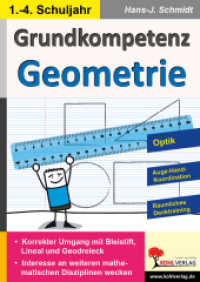- ホーム
- > 洋書
- > ドイツ書
- > Mathematics, Sciences & Technology
- > Technology
- > electronics, electrical engineering, telecommunications
Full Description
This textbook serves as a tutorial for engineering students. Even though this book focuses on the fundamentals, it reveals the authors' deep insight into the relationship between the phasor, Fourier transform, and Laplace transform, and explains to students why these transforms are employed in circuit analysis.








